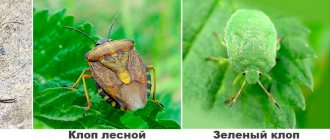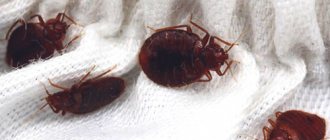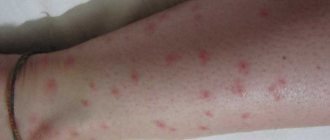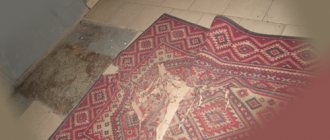Bed bug (Cimex lectularius) is a small, round, flightless insect that belongs to the genus Cimex, which includes three species of human blood-sucking bugs.
An adult bedbug reaches 5-7 mm in length, and nymphs (juveniles) reach a length of about 1.5 mm. Bed bugs have a flattened body, so they are often confused with ticks or cockroaches. Bed bugs have rudimentary wings, so they cannot fly. However, bed bugs tend to move along ceilings and walls due to zero weight, which is explained by the lack of fluid in their body. Therefore, bed bugs can withstand temperatures of -30% and react so strongly to + 20. In spring, bed bugs reproduce especially intensively.
Bed bugs feed on the blood of animals and people. An adult bedbug has a brown color that turns red after the bedbug has sucked blood. Bedbug nymphs are naturally colorless and turn bright red after drinking blood. How to detect bed bugs?
Before World War II, bed bugs were widespread. But after the widespread use of the pesticide, DDT became much less common. With the ban on the use of pesticides, the bedbug population began to increase again. In recent years, the increase has become rapid (the population has increased several times) even in such prosperous countries as Europe and the USA.
Bed bugs can live anywhere, settling in small cracks and under furniture upholstery. They most often live in bedrooms, especially in beds, mattresses, box springs and bed frames. Bedbugs also settle in curtains, inside corners of chests of drawers and other furniture, and cracks in wallpaper (often near the bed).
Bedbugs can go without food for months and can live in non-residential premises.
Recently, there have been many reports of bed bugs being discovered even in prestigious hotels. Hotel guests even filed lawsuits. Guests woke up to hundreds of bed bug bites. Posted by users on various forums and websites dedicated to travel, materials constantly provide new information and even print bed bug photos confirming the presence of bed bugs in hotels.
Bed bugs can be brought from home or another hotel in clothing or in suitcases. That's why any hotel is a potential target for bed bugs.
Main breeding sites
Bed bugs multiply in the apartment, choosing secluded places. Quite popular in the apartment are:
- space under baseboards;
- cracks in furniture that is located close to a person’s sleeping area;
- the space between the wallpaper and the wall, the wallpaper joints themselves;
- clothes in the closet and furniture upholstery;
- internal socket boxes;
- Appliances.
Where to look for bedbugs
These places are ideal for breeding in large numbers without harm to the offspring. In most cases, the entire house can become a springboard for active reproduction if favorable conditions are present. But still, both bed and sofa bugs prefer to be located closer to the source of food, that is, to a person.
Symptoms of bed bug bites
Bed bugs bite people and suck their blood. Bed bugs are active at night and most often bite exposed areas of the body of a sleeping person. The neck, face and hands are the most common sites for bedbug bites. Bed bug bites are painless and are often ignored. The main signs of bed bug bites are slight swelling; Skin itching and redness often occurs. Scratching the bedbug bite area can become infected. A peculiarity of bed bug bites is that they are often located in one line. Infectious disease experts call this “breakfast, lunch and dinner,” which refers to sequential feeding that occurs next door.
Bed bug bites can be mistaken for mosquito or flea bites, rashes, or dermatological conditions. Bed bugs have glands whose secretions have a specific odor; In addition, dark spots from bedbug feces may appear in habitats (for example, sheets).
There is no evidence yet that bed bugs transmit infectious diseases. Researchers, however, suggest that insects may be carriers of American trypanosomiasis (Chagas disease). Nowadays, research continues to determine whether bed bugs can transmit diseases.
What do house bugs look like?
In city apartments and country houses you can sometimes find clusters of insects that differ greatly in appearance: they have different body shapes, sizes and colors. But at the same time they are in close proximity to each other, which would look somewhat strange if they were representatives of different species or orders. House bugs, as these insects are called, despite all the morphological differences, are actually one species of the family.
This is what a cluster of bedbugs looks like: adults, laid eggs and larvae, as well as their waste products
Adults in a hungry state have a wide, almost round body, dirty yellow or brown, 4–5 mm long, the upper part of which is almost flat and consists of flexible segments. In the photo this is clearly visible in the form of transverse stripes. Thanks to this structure, bedbugs are practically invulnerable to mechanical influences on them. Like all insects, they have 3 pairs of limbs. Males differ in appearance from females only by being slightly smaller in size. You could say that bedbugs look like flattened cockroaches. But unlike them, they have short antennae.
The size of a bug in a hungry state does not exceed 5 mm in length
House bugs do not have wings and therefore cannot fly. They also don't jump. But they crawl very well on any surface, including steep ones. Sometimes it happens that, unable to resist, bedbugs fall from top to bottom, for example, from the ceiling onto the bed. This circumstance gave rise to the myth about their ability to fly and jump.
By the appearance of a bug you can easily determine whether it is full or hungry. An individual that has drunk blood noticeably elongates in length, reaching 8–9 mm, and has a more convex rather than flattened body shape. The color also changes, becoming bright red in individuals in the larval stage or almost black in adults.
A bug in different states: on the left - hungry, on the right - well-fed
The house bug is the only species of the suborder that lives in human homes in the Euro-Asian part of the planet. Sometimes it is also called bed or sofa. But in South America, especially in Argentina, Mexico and some southern states of the USA, there is another and more dangerous representative of the suborder - the triatomine or kissing bug, the bite of which is fatal.
Video: what bed bugs look like
METHODS AND WAYS OF COMBATING BUGS
To kill bedbugs at home, you can use old-fashioned recipes that do not harm others. This is boiling water, ammonia, kerosene and turpentine, mixtures of kerosene and turpentine with soap and hot water. Books and small pieces of furniture (chairs, chairs, shelves), where signs of bedbugs are found, can be kept in the cold for a couple of hours. In any case, if bedbugs reappear, the treatment should be repeated. But unfortunately, these methods are only a temporary measure; for the complete destruction of bedbugs, contact professionals!
Bed bug treatments should be applied to the area where the insects are found, as well as to areas where they may be hiding. Another method of independently combating bed bugs is the destruction of furniture affected by insects. A mattress that is heavily infested with bed bugs should be destroyed. Since the bed is difficult to treat with insecticide, it and the mattress must often be destroyed.
Conditions under which bedbug reproduction accelerates
An apartment is an ideal place for the breeding of entire generations of bedbugs. The optimal temperature for laying eggs of these insects is 20-30 degrees Celsius , that is, approximately the temperature that we usually try to maintain in our apartments. Also, the rapid reproduction of bed bugs is stimulated by a stable source of food, that is, the presence of a person in the apartment from whom the blood can be sucked.
Parasites die at temperatures above 55-60 degrees , no less. If the temperature in the apartment is 10°C, then they will not freeze, but their reproduction will stop. But at -10°C, bedbugs will die out only after 2 weeks. If you freeze the pests at a temperature of -20°C, then domestic bugs will disappear from your apartment forever, the main thing is to clean all the places where their nests could be located.
Not a lot of statistics:
The Unified City Disinfection Service keeps statistics on the number of received and processed applications from the population of Moscow and the Moscow region for the destruction of bedbugs in the period from 2006 to the present. With the help of these data we understand that these harmful insects have not lost their interest throughout the entire time and with every Every year we have to fight them more and more difficult, because their immunity quickly gets used to various active insecticidal substances, in other words, poisons directed against them. Along with manufacturers of chemicals, we carry out constant monitoring and consult with employees of the research institute on the quality and crossing of various derivatives in order to reduce drug resistance in bedbugs. We use ovicidal and prolonged action drugs. Below you can see the dynamics of the number of completed bed bug disinfestation requests:
Number of applications:
Can bedbugs reproduce without food?
In order for fertilization to occur in bedbugs, both males and females need blood, otherwise their body simply will not have a sufficient reserve. Moreover, for this process there should be about 3-7 full meals (blood). Individuals feed only at night, for fear of being discovered. Bedbugs cannot exist without blood.
Moreover, bedbugs need blood not only for reproduction, but also for growth. At different stages of the life cycle, the amount of blood consumed by individuals is different. For example, bedbug larvae consume less food, but more often, while adult bedbugs drink more blood at a time, but do it much less frequently.
When bedbugs starve, their body begins to dry out, and all vital processes slow down. They become passive, practically do not move and spend all their time in the nest.
Life cycle of bedbugs
The lifespan of an adult insect is 12-14 months. The maturation period takes about 30-35 days, but if conditions for development are unfavorable, the larva goes into suspended animation.
During this period, life processes slow down, but as soon as conditions change for the better, the larva comes to life and goes through the entire life cycle starting from the interrupted stage.
The development process of a parasitic insect occurs in 3 stages. First, the fertilized female lays eggs. The egg then develops into a larva (nymph). After a short period of time, the larva becomes an imago (mature individual).
There is no intermediate transformation into a pupa, so entomologists classify bedbugs as insects with an incomplete cycle of transformation.
The bedbug's diet consists exclusively of blood. It is necessary for it at all stages of maturation and for further viability.
Reproduction through violence
The method of reproduction of these insects can be called violent. The mating male uses a painful and quite traumatic method of insemination: he attacks the female, pierces her abdomen with the genital organ and injects sperm into the resulting hole.
The injected seminal fluid is enough for the female to reproduce offspring for the entire life cycle. She spends it gradually, as needed. In starvation conditions, the digested part of the seed can even become additional nutrition for the female.
Thus, a female mate only once in her entire life. Males are capable of sexual intercourse up to 200 times a day.
Males are promiscuous in sexual relations and can attack another male or a nymph incapable of fertilization.
A violent act can lead to its death, so nature has endowed the larva with the ability to secrete a repellent enzyme that causes a feeling of anxiety in the male.
Sexual intercourse with a male leads to mixing of seminal fluid in the body of the injured party.
As a result, during the next mating, the most viable sperm enter the female’s spermatheca.
Stages of bedbug development
The complete development cycle of the parasite consists of 7 stages. Full development takes only 1 month, so a horde of parasites can completely fill an apartment in 30-40 days. Stage of insect development:
Bedbug development cycle
- The incubation period for larval development ranges from 5 to 20 days.
- After the incubation time has passed, a nymph emerges from the egg. Body length is 1.5 mm.
- After 6 days, the larva enters the third phase of development, increasing to 2 mm. This cycle is repeated every week.
- At the end of the 7th stage, the bug becomes an adult, ready to reproduce. The development time is determined by the feeding rate. The larvae eat only once a week, due to which they move to the next stage of development. The same way bedbugs reproduce, and at what speed they develop, neither do they reproduce as parasites. This is what makes them so difficult to destroy. Life cycle of bedbugs Before you start fighting parasites, you need to carefully study the life cycle of the insect:
- The larva of a house bug develops 5-10 years under normal conditions and 20 years under negative conditions.
- The larva hatches into a nymph, which goes through 6 stages of development in 1 month. After this, the individual is ready to mate.
The bug lives quite a long time - 14 months under normal conditions. If you lower the air temperature, then life expectancy can increase by another 1 year due to suspended animation.
Living with blood-sucking parasites is completely unbearable. The insect population is growing exponentially due to rapid reproduction and resistance to negative factors.











